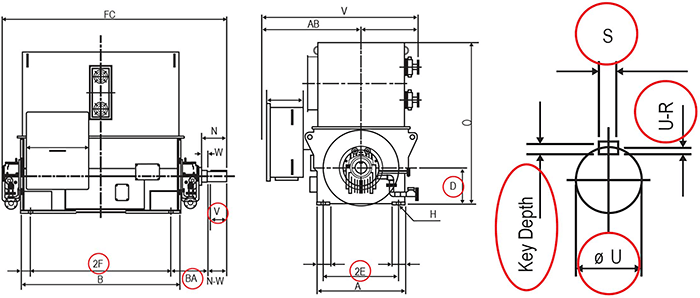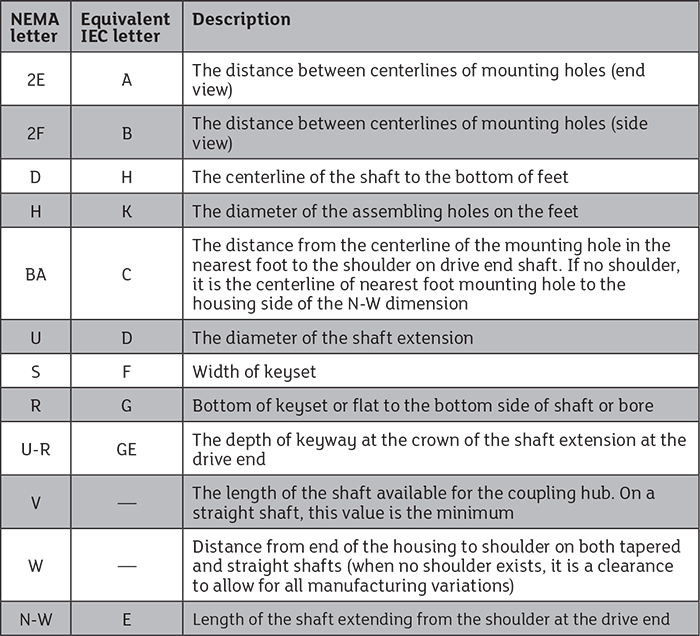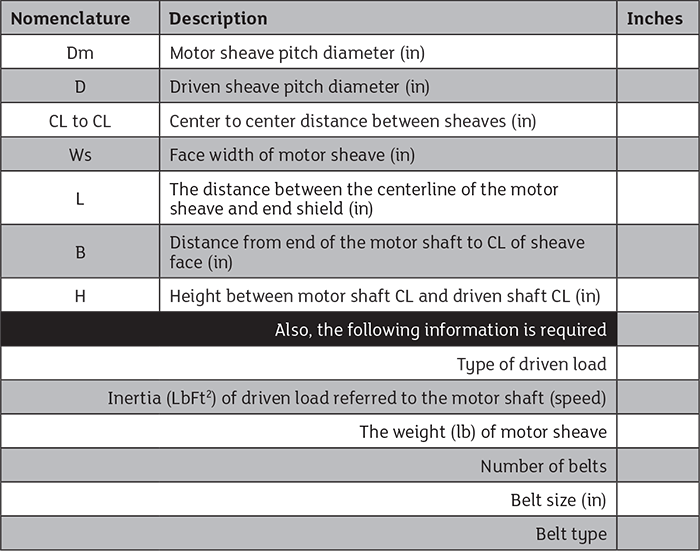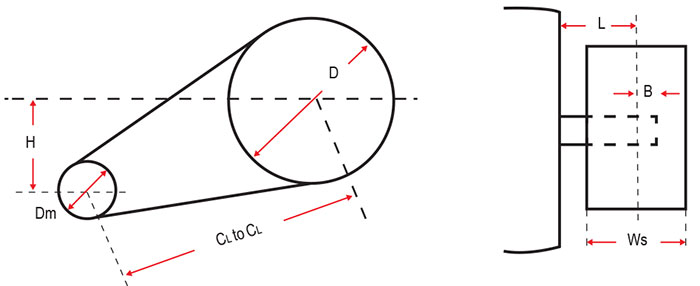Considering the long history of electric motors powering the industrial world, it is no surprise when the need arises to replace a large induction motor. This article details what should be considered when attempting to replace an outdated or failed machine with a new induction motor.
Many factors could lead to the replacement of a motor, including defects, a desire to operate at higher efficiencies or a demand to achieve higher power factors. Every case is different and specific to each operation. However, there are universal considerations that should be accounted for when upgrading a large induction motor.
Frames within the National Electrical Manufacturers Association (NEMA) range of small to medium industrial motors are not complicated to replace due to the universal dimension standards. However, medium- or high-voltage motors do not have dimensional standardization. Additionally, unlike motors with power less than 500 horsepower (hp), large motors are not required to maintain comparable torque or current levels from manufacturer to manufacturer.
 Image 1 (left to right). Motor side. Image 2. Motor end view. Image 3. Shaft details (Images courtesy of TMEIC)
Image 1 (left to right). Motor side. Image 2. Motor end view. Image 3. Shaft details (Images courtesy of TMEIC)Unless the end user intends to rebuild the foundation, these high-power ratings and frame dimensions require detailed attention to verify the mechanical interchangeability of an upgraded motor, in addition to an accurate evaluation of the electrical performance.
The following are critical mechanical and electrical considerations required to ensure a successful transition when replacing large motors.
Mechanical Interchangeability
Images 1, 2 and 3 illustrate the dimensions that the replacing motor needs to match to be considered a “drop-in replacement motor.” The descriptions of each dimension in Table 1 explain their relevance. Included is a column to indicate the similar nomenclatures of the International Electrotechnical Commission (IEC) standard.
Motor manufacturers must ensure the proposed replacement motor is capable of matching shaft dimensions, shaft height, the position of assembly holes and the BA dimension. All other dimensions may vary.
 Table 1. Explaining relevance for “drop-in replacement motors”
Table 1. Explaining relevance for “drop-in replacement motors”It is the end user’s responsibility to ensure the new motor does not interfere with equipment surrounding the motor, pipes and other utility and architectural structures. If provided the opportunity for a site walkthrough, the manufacturer’s application engineer can assist in observing space limitations.
The end user could request the relocation of terminal boxes and water and oil connections to be closer to the existing terminal boxes and connections. It is possible to accommodate the request by locating all terminal boxes on the same side of the motor, but an exact match is unlikely.
Shift toward the drive end or the nondrive end and locate the power cables entry point to the same side as the existing terminal box. This reduces pipe bending. Using flexible conductors yields easier assembly.
 Table 2. Checklist for motor owners before sending in quote request to application engineer
Table 2. Checklist for motor owners before sending in quote request to application engineerWhen applicable, water and oil inlet and outlets should be on the side of the motor with existing connections, but adjustments to incoming pipes may be required. It is important for the end user to understand this possibility ahead of time, no later than the proposal stage.
During the initial process, the project’s engineer will use the existing motor outline drawing to evaluate and quote a frame with matching dimensions. If no drawing exists, the motor OEM cannot guarantee interchangeability of the equipment.
Coupling
Most motors couple directly to fans, compressors, pumps and other process machinery. In this case, the motor outline drawing will provide the necessary shaft dimensions.
However, in applications where the motor couples through a sheave and belt or a tapered, hydraulic coupling, the motor manufacturer should request details exceeding the basic dimensions of the shaft to replicate a shaft end for a tapered hydraulic coupling. The motor owner can provide a drawing with these details.
In most cases, due to radial forces applied to the shaft, belt-sheave couplings require a particular bearing, end shield and high-strength steel for the shaft. This is not included in standard products. Image 4 and Table 2 provide a checklist for belt and sheave data collection to consider before a quote request is sent to the application engineer.
Accessories
Unless specifically requested, the end user can request the same model be provided to ensure the same controls and interfaces are used.
 Image 4. Belt and sheave data requirements
Image 4. Belt and sheave data requirementsColor
Some facilities have color-coded equipment. Before the issuance of a proposal, manufacturers should ask whether the client permits the use of the motor manufacturer’s standard color. If not, request the Munsell or RAL color codes.
Electrical Performance
Torque is vital to a successful motor replacement. The new motor must be able to accelerate and drive the existing equipment without exceeding the locked rotor time. In some cases, too-fast acceleration is detrimental to other equipment. The new motor must provide enough breakdown and locked rotor torque values, as well as the same revolutions per minute (rpm), power and current. New motors should provide equal or better efficiency when compared to legacy equipment.
To evaluate motor suitability, the end user should provide the speed-torque curve of the existing driven equipment, plus the total inertia on the motor shaft. In many of these cases, this information is not available from the driven equipment manufacturer.
The end user should provide records of the original motor’s datasheet, speed-torque curves and thermal limit curves for the motor application engineer to consult. Photography of the existing motor’s nameplate is of no use. On occasion, an end user may accept a motor with dissimilar dimensions and make the necessary site adaptations.
It is important to understand the deviations owners are willing to accept. It may not be required to provide a “drop-in replacement.” Even so, the electrical performance data is still a must, unless the driven equipment is changing. When the shaft height of the replacing motor is below the height of the existing unit, it may be possible to provide a transition base to match the foundation holes. The opposite makes a direct replacement impossible without foundation changes. Work closely with the application engineer for certainty.
Replacing Motors of the Same Manufacturer
Replacing motors of the same make and model could be perceived as being risk free and relatively straightforward. Many people assume the only necessary information is the corresponding motor model number. However, even in these cases there are potential risks.
Consider, for example, an original motor that has been modified. If the motor’s original nameplate is secured to the frame and provided as the motor identity and only frame of reference to the application engineer, the miscommunication could result in delays and extra cost. It is essential to understand if the motor to be replaced was ever modified and, if so, deviations the user is willing to accept.
In cases where a “drop-in replacement” is not required, the electrical performance data remains necessary unless the driven equipment has changed.


